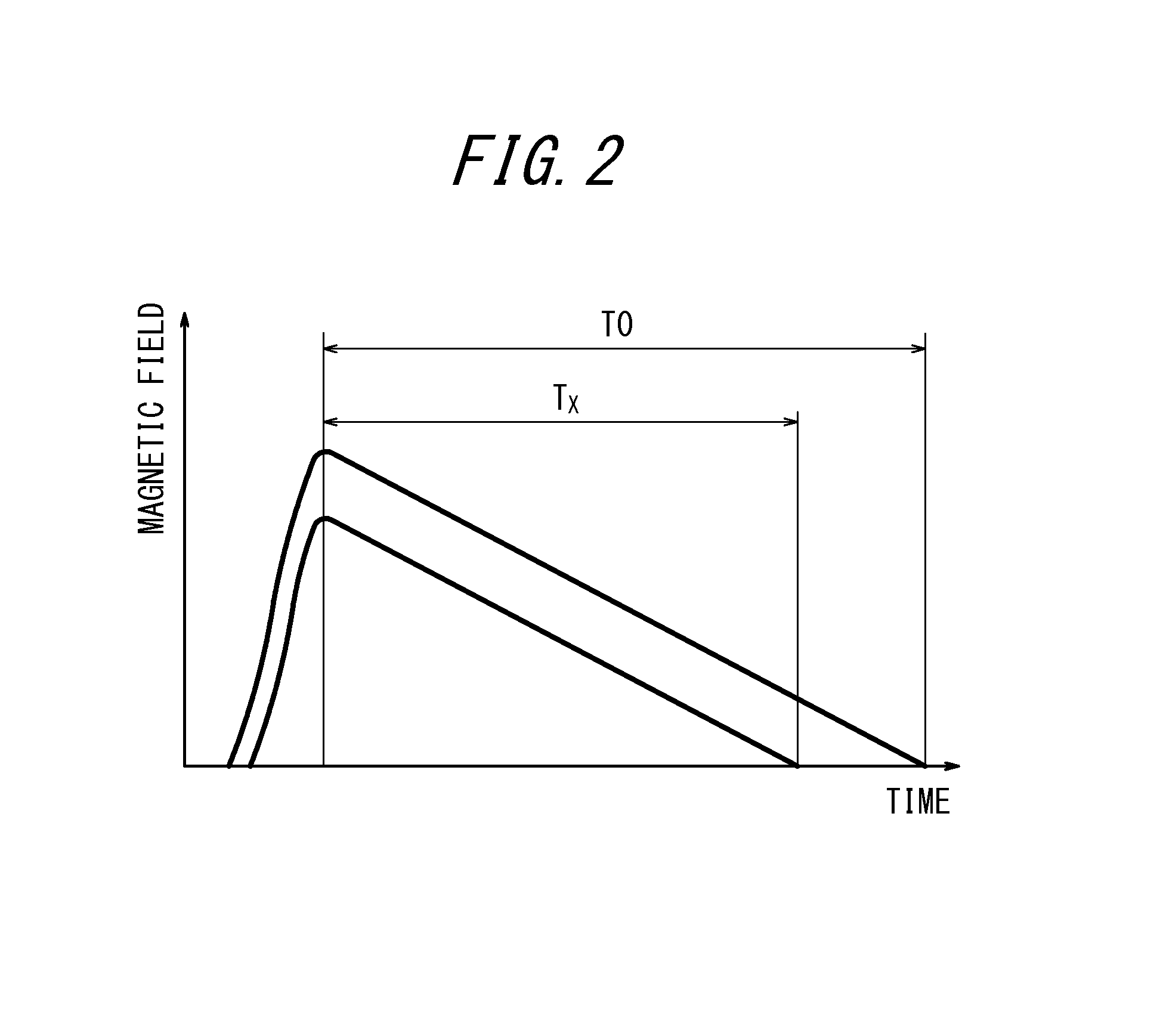Conveyor belt wear detection apparatus
a technology of wear detection and conveyor belt, which is applied in the direction of magnetic variables, instruments, transportation and packaging, etc., can solve the problems of belt unusability, failure of detection, deterioration in accuracy, etc., and achieve the effect of high accuracy, accurate estimation of the degree of advance of wear, and suppression of the peeled area
- Summary
- Abstract
- Description
- Claims
- Application Information
AI Technical Summary
Benefits of technology
Problems solved by technology
Method used
Image
Examples
first embodiment
[0033]In the following, embodiments of the present invention are described with reference to the drawings. FIG. 3 is side view of a conveyor belt in a conveyor belt wear detection apparatus according to a first embodiment of the present invention, FIG. 4 is an enlarged sectional view of the portion b of FIG. 3, and FIG. 5 is a view taken along the arrow C-C in FIG. 3.
[0034]The wear detection apparatus includes: a rubber magnet 3, which is embedded on a front-side surface 2a side of a conveyor belt 2 looped around a pulley 1; and a magnetic sensor 4, which is disposed in proximity to the front-side surface 2a and detects a magnetic field from the rubber magnet 3.
[0035]The rubber magnet 3 extends in a conveyor belt width direction and includes a plate-like diagonal portion 21 and a plate-like parallel portion 22, which are both magnetized in the thickness direction. The diagonal portion 21 linearly extends, in section in a conveyor belt length direction, from an outer side end 3b, whi...
second embodiment
[0042]FIG. 7 is a sectional view along a belt longitudinal direction of a conveyor belt according to a second embodiment of the present invention. As illustrated in FIG. 7, a conveyor belt 30 has a configuration similar to that of the conveyor belt 2 of the first embodiment (see FIG. 4), except that the conveyor belt 30 has, on both sides thereof in the belt longitudinal direction, a trigger magnet 31 and a reference magnet 32 which are disposed as being in close contact with the reinforcement 5 as a core of the belt and embedded on the front-side surface 30a side.
[0043]Here, the trigger magnet 31 is arranged ahead of the rubber magnet 3 in the conveyor belt transport direction, so as to have, for example, the south pole on the front side in the belt transport direction and the north pole on the rear side in the belt transport direction. As a result, during running of the conveyor belt 30, the trigger magnet 31 passes through, ahead of the rubber magnet 3, a magnetic field detection...
PUM
| Property | Measurement | Unit |
|---|---|---|
| thickness | aaaaa | aaaaa |
| distance | aaaaa | aaaaa |
| speed | aaaaa | aaaaa |
Abstract
Description
Claims
Application Information
 Login to View More
Login to View More - R&D
- Intellectual Property
- Life Sciences
- Materials
- Tech Scout
- Unparalleled Data Quality
- Higher Quality Content
- 60% Fewer Hallucinations
Browse by: Latest US Patents, China's latest patents, Technical Efficacy Thesaurus, Application Domain, Technology Topic, Popular Technical Reports.
© 2025 PatSnap. All rights reserved.Legal|Privacy policy|Modern Slavery Act Transparency Statement|Sitemap|About US| Contact US: help@patsnap.com



